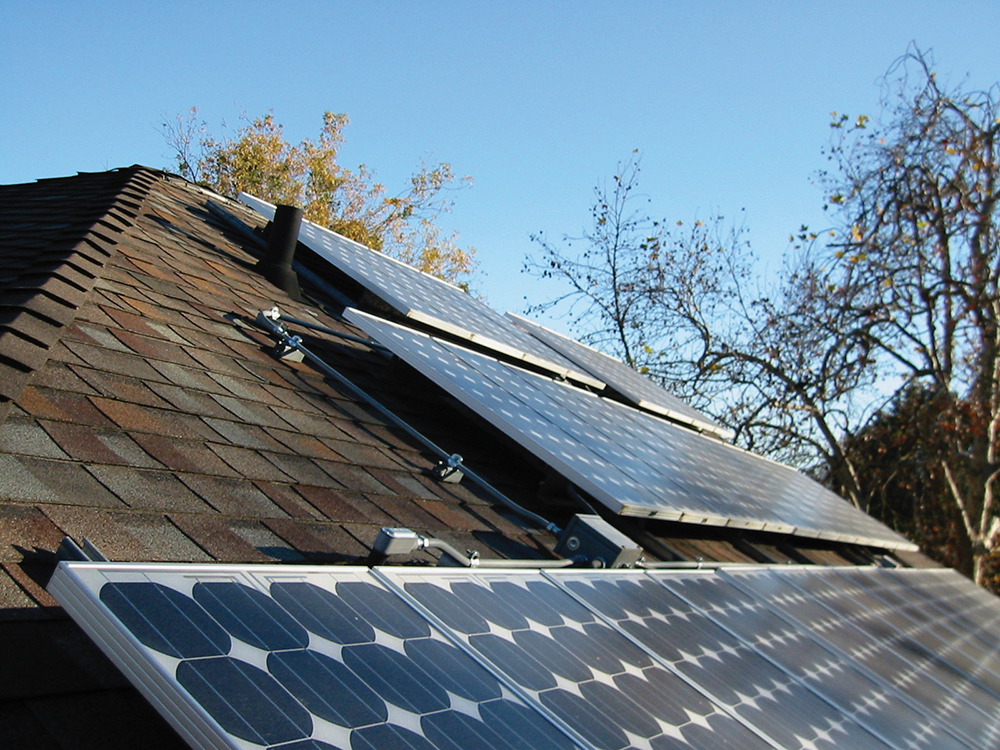Question
Where conductors from both dc and ac photovoltaic systems utilize a common junction box or other enclosure, are there any special identification requirements for these conductors? Also, where photovoltaic circuits are run inside a building (whether in conduit or not), can these circuits be run embedded within insulation, and if so, is there any derating of such conductors required? E.C.
Answer
Section 690.4 is the first section of the 2011NECthat covers the installation raised in the first portion of your question. There seems to be one summation that is being made for clarity, the question inquires about “both dc and ac photovoltaic systems.” The summation being made deals with a common junction box where the PV output circuit conductors and the inverter output circuits are both present on an interactive system.
This being clarified, 690.4(B) states, “Photovoltaic source circuits and PV output circuits shall not be contained in the same raceway, cable tray, cable, outlet box, junction box, or similar fitting as conductors, feeders, or branch circuits of other non-PV systems, unless the conductors of the different systems are separated by a partition. Photovoltaic system conductors shall be identified and grouped as required by 690.4(B)(1) through (4). The means of identification shall be permitted by separate color coding, marking tape, tagging, or other approved means.”
Looking at the original proposals that were submitted for this clarifying change in the 2011NEC, Proposal 4-183 and Proposal 4-184, the submitter intended that whenever they were part of the same “PV system” that both the ac and dc conductors could be contained in the same box or enclosure provided they are properly grouped and indentified.
One of the problems that arises here is that the current language can still lead to confusion on the part of the installer and the enforcer. In 690.2 the definition ofPV output circuitis as follows, “Circuit conductors between the photovoltaic source circuit(s) and the inverter or dc utilization equipment.” The definition ofinverter output circuitis as follows, “Conductors between the inverter and an ac panelboard for stand-alone systems or the conductors between the inverter and the service equipment or another electric power production source, such as a utility, for electrical production and distribution network.”
When you look at these definitions, the allowance does not clearly extend to the inverter output circuits, commonly the multiwire branch circuit from the inverter to the ac panelboard, as being allowed in the same enclosure even though that was the intent of the submitter in the substantiation. To that extent, I understand the confusion that you may have on this requirement and acknowledge that CMP-4 needs to further clarify this in the 2014NEC.
At this point in time, it is my opinion that the conductors from the same system, both ac and dc, can occupy the same box or enclosure provided, as stated above, that they are properly grouped and identified. The other thing to remember here is that all of the Chapter 3 requirements for whatever wiring method is utilized also need to be complied with, including conductor insulation rating, conditions of use and terminal temperature ratings.
A very similar issue exists with the installation of multiple PV systems on the same roof top. These could be ac, dc or both. The conductors from these multiple systems must also be run from the roof top into the building or structure. In my opinion, CMP-4 also needs to address this issue. Any proposals or documented field experience that is submitted to CMP-4 through the NFPA proposal system would be beneficial to everyone.
That brings us to the second portion of the question as to whether or not PV circuits (in or out of conduit) run inside of a building or structure need to consider adjustment and correction factors, especially where run through thermal building insulation. Section 90.3 of theNECstates that Chapters 1 through 4 apply generally unless supplemented or modified by Chapters 5, 6 or 7. Part IV of Chapter 690 addresses the acceptable wiring methods for use when installing a PV system on a building or structure and it does not contain any modification to the installation requirements for wiring methods installed in or through thermal building insulation. So the answer to the question is yes, PV conductors installed in an acceptable wiring method can be run in or through thermal building insulation; and yes, any correction or adjustment factors that are required for the applicable wiring method must be considered.










Find Us on Socials